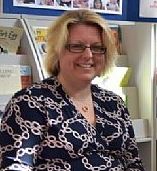Penrith City Local History - Local government - Library history
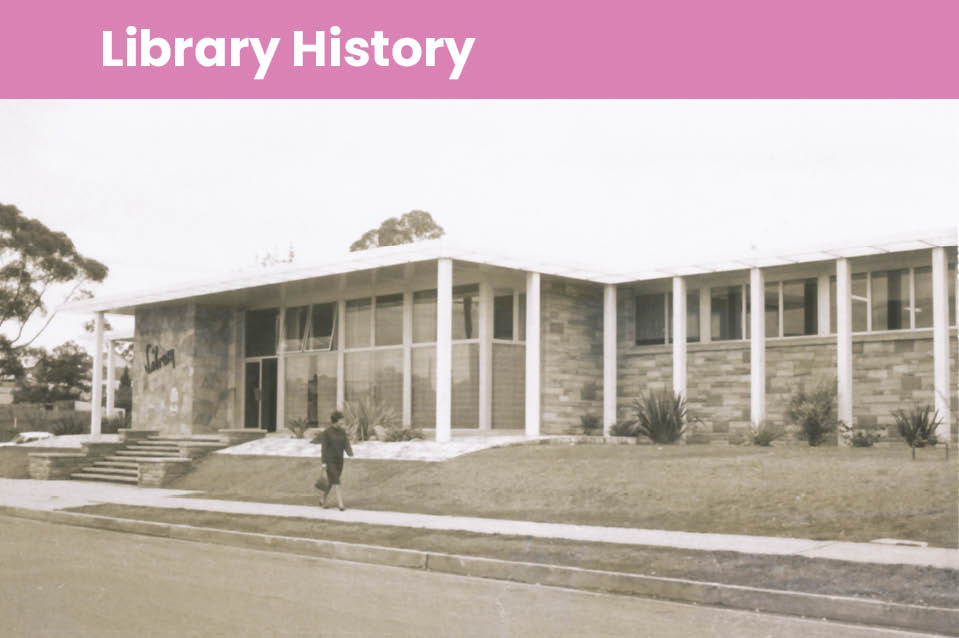
On 22 April 1948 Penrith Municipal Library was officially opened in the front room of the School of Arts Building in Castlereagh Street Penrith. The opening ceremony was performed by the Honourable John Joseph Cahill, Minster for Local Government.
When Penrith Municipal Library opened its doors, there had already been an intermittent library service operating in Penrith since 1885. This earlier library service, poorly funded and stocked, had to rely on funding from member subscriptions, donations from the public, limited Council assistance and a small, one-off subsidy from the government for the purchase of its initial bookstock. A fee of 2 shillings and sixpence per annum was applicable to borrow from the Library. This Library was opened on 5 January 1885 in Judges building on the corner of Castlereagh and High Streets. The librarian (Edwin Bott) was also employed to clean and light the Council Chambers, all for 13 shillings a week.
In November 1889, the Library moved to the Council Chambers in Henry Street. The facilities were much better with the Library experiencing about 45 visitors and 32 books borrowed a week.
With the establishment of the Penrith School of Arts, the Council Library merged with the School of Arts in rented premises on the corner of High and Castlereagh Street. In 1904 Katie Woodriff sold the contents of her home, Rodley, after the death of her husband. The School of Arts purchased her books. By 1905, membership had risen to 150 and the books totalled 1,500. The School of Arts opened their doors in its own building in Castlereagh Street in 1910. It was opened by the Minister for Public Instruction, the Hon. George Beeby. Its library service continued until 1948. Similarly, at St Marys, the Mechanics Institute operated a lending library for members until 1949.
2019 marks the 80th anniversary of landmark legislation that was passed by the NSW Parliament on 3 November 1939 – that is The Library Act, 1939. It says a lots for the vision of those parliamentarians and the cultural activists who pushed them to enact such far reaching changes just 2 months after the start of the Second World War. The Library Act ensured the NSW Government would provide government subsidies to municipal and shire councils if they provided a free public library service to their community. As a result, joint funding of local library services would be guaranteed for the first time.
Both Penrith and St Marys Municipal Councils adopted the concept of establishing a free public library in their respective council areas. Although St Marys Council investigated funding options, amalgamation with Penrith ceased any further action by the Council.
In April 1945, the NSW Library Board visited Penrith and St Marys to provide more information on the implications of establishing a public library service in their respective council areas. Nepean Shire was also interested, but Castlereagh Council was not. The government provided training for the librarian employed, assistance in purchasing and cataloguing books. Negotiations followed between Penrith Council and the School of Arts Committee. In February 1947 Council accepted an offer of a large front room in the School of Arts for a rental fee of 1 shilling per annum. A special Library Rate levy of 1d (one penny) was imposed in 1947 to help fund this new Council service.
A Library committee comprising local community members together with Council representatives was set up in November 1947 to guide the planning for the new service to the Penrith community. Margaret Kinsella was appointed the first Librarian. The council reported that the librarian’s job would be full-time and the Library would have £500 to operate on, made up of Library rates and Government subsidies.
When opened the Library was staffed by one librarian (Margaret Kinsella), it had a bookstock of 1,500 items. About £1,500 was spent on the Library service during that first year, and in its annual report for 1948 (covering its first eight months), 470 adults and 528 children had joined. Members had borrowed 18,029 books. When we realise that the bookstock was only a mere 1,500 items we can imagine the scramble some days to replenish the empty book shelves with returned books!
Library Hours
Mon, Thur, Fri 10 – noon 2 – 5pm
Tues 2 – 5pm 7:30 – 8:30pm
Thurs (additional) 7:30 – 8:30pm
Saturday 9 – 1pm 6:30 – 7:30pm
CLOSED Wed, Sun, Public Holidays
During 1949 Story Hour sessions commenced for children 5-10 years of age. This continued with increasing success until 1950, when due to shortage of space and staff, it had to be discontinued.
After weeks of preparation, a branch library at St Marys was opened in the electricity building on Mamre Road and officially opened on 29 November 1949 by Geoffrey Remington, then the Deputy Chairman of the NSW Library Board. In the 1950s, several small ‘deposit stations’ were opened at Regentville, Cranebrook, Mulgoa and Wallacia.
1950 brought the first real problems for the Library service with increasing members and bookstock. It wasn’t until March 1958 that additional space was made available in the Penrith School of Arts building. In July 1950, a Library Bulletin had been commenced. This monthly publication gave details of adult books placed in the Library as well as general items of Library interest. In 1954 this type of service was extended by issuing a junior Bulletin ‘The Spy Book’. It was patterned on the adult bulletin and in addition gave reading with articles and reviews. The same year brought publication of the first detailed Book lists on special subjects, aimed to meet the needs of people interested in particular fields of knowledge.
An Amendment to the Library Act in 1952, provided for an increase in the Library subsidy to a £ for £ basis, giving needed financial assistance to the Library service at a critical stage in its history. Deposit stations opened in the same year at Cranebrook Post Office and Mulgoa Public School. A deposit station at Regentville closed down, being too close to the Central Library. A deposit station was opened at Wallacia Public School in 1953.
In 1953 the library appointed its first trained assistant, Miss Joan Pearson. She later became Chief Librarian. In the following years other trained assistants were appointed. This of course, allowed for a greater development in the Library service. Until 1953 the Library had been staffed with temporary and untrained assistants, and the Library owes much to their valuable and faithful service, for without them the Library service would have been much curtailed. A particular debt is owed to two such members of staff – Phyl Mellor, A.D. Tyler and P. Hore.
No children under 13 years were allowed to use the library in the evening opening times. Non-residents were charged a subscription rate. Margaret Trask (nee Kinsella) resigned as Chief Librarian, replaced by Joan Pearson.
In March 1955, due to the generosity of the Penrith School of Arts, came the first opportunity for much needed expansion space at the space at the Central Library at Penrith. The acquisition of a second room made it possible to separate the junior and adult sections, and with a coat of paint and purchase of new furniture, a much more attractive and accessible lay-out was possible.
The following year saw a marked improvement in the library service as a result of the extensive activity of 1955. Bookstock and membership figures rose at both the Central and Branch Libraries. The Opening of a Youth Collection in 1955 at St Marys helped fill a very pressing need in that area. The Reference collection at the Central Library was expanded, and the acquisition of a new set of Encyclopaedia Britannica aided this.
In 1956 a special effort was made to interest the public in Children’s Book Week. Displays were held both at Penrith and St Marys. At Penrith the children’s author Eve Pownall came to talk to adults and children. Classes from most of the schools in the district visited the displays and heard book reviews and illustrated talks.
On 26 October 1956 the Chief Librarian, Margaret Trask, resigned to take up duties as a Librarian to the A.M.P. Society, Sydney. Her resignation was received with regret by all who were associated with the library, for through her efforts a strong foundation has been laid for the Penrith Municipal Library Services. Miss Joan Pearson, who had commenced her training with the Penrith Library was appointed by the Council to fill the position of Chief Librarian.
In 1957, the deposit station at Cranebrook closed. By 1958, the bookstock had increased to 12,885, and loans had increased to 84,873 per annum. The Library was staffed by 5 staff.
Better borrowing conditions were introduced, allowing fiction books to be retained for longer periods and permitting unrestricted borrowing of non-fiction books for the same period. By the late 1950s there were 3 adult and 4 junior deposit stations.
In November 1959, Penrith municipality was declared a city, and so, Penrith City Library was born. On 1 June 1960, the Library opened in a refurbished old Council Chambers in Henry Street vacated by the Council by its moved further down Henry Street. Library staff made use of the Boy Scouts and local police officers to help with the move to Henry Street. In May 1961 Penrith Library is believed to have been the first Library in NSW to celebrate Library Week. The theme was ‘Tt’s time to read’. Local shops displays books and everyone was encouraged to join the Library. They also had books on the Indonesian language ‘to make the collection complete’, stated Margaret Trask. The Library hours at that time was 10am to 9pm week days, and 9am-12 noon on Saturdays. 
Deposit stations began to close in 1962 in anticipation of a bookmobile service to outer lying areas which commenced in March 1963. Also in 1963, the Sydney Subject Specialisation Scheme was introduced. Each public library was assigned subjects areas to collect. Penrith was given Asian history, geography and literature.
After returning for a brief period as Chief Librarian, Margaret Trask resigned in December 1963 in protest at Councils ‘unrealistic decision’ on the salary for appointment of Deputy Librarian. Thomas Dash was appointed Chief Librarian on 29 January 1964. On 6 March 1964 a new central library building on the corner of Henry and Evan Streets was opened by the Minster for Education, Ernest Wetherell. A month later the old Library (Council Chambers) was demolished to make way for a Library carpark.
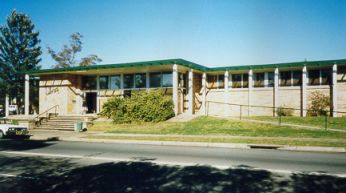
In 1965, St Marys Branch Library moved into the former St Marys Council Chambers building on Mamre Road. Following Thomas Dash’s resignation, Rex Whalan was appointed Chief Librarian on 6 December 1968. In 1970 extensions were made to the Library in Henry Street to accommodate adult lending books. On 1 January 1974, Rex Whalan resigned. He was followed by Robyn Allen in July 1974. A new mobile Library vehicle commenced operation in September 1974.
On 11 March 1977, Robyn Allen resigned and Alan Flores was appointed Chief Librarian. With funding support from the State Government a toy library service was introduced in the 1970s. In March 1979 a new St Marys branch Library opened alongside the Senior Citizens centre.
During the 1980s a new Central Library was planned as part of a planned Civic Centre and Library on the corner of High and Castlereagh Roads. In 1980 Penrith Library appointed its first Local Studies Librarian, Colin Stevenson, who established, managed and continued through his efforts a unique library service point and Research Room. He was also responsible for a number of local histories. Colin later went on to be appointed Reader Services Librarian and Library Services Manager. In April 1980, Emu Plains Branch Library opened in the Lennox Shopping Centre and in May 1981, it reopened in a new section of the shopping centre. In 1982 a Toyota Mini-Bus commenced as the new Library Bus. In February 1983, Londonderry Branch opened in the Londonderry Public School. In April 1983, South Penrith Branch Library opened in Southlands Shopping Centre, Evan Street, South Penrith. In May 1984 Braddock deposit station opened in the Braddock Public School, Cranebrook.
On 5 December 1993 the old library on the corner of Henry and Evan Streets closed. The Library was set to move into Council’s new Civic Centre at 601 High Street. The following day, staff began the huge task of moving and setting up in the new Civic Centre Library. Covering an area of approximately 3,000 square metres, the new Library takes up at least one third of the Civic Centre and opened its doors to the public on a hot, windy and firey 8 January 1994. The Civic Centre and Library was officially opened on Saturday 28 May, 1994.

On 12 December 1998, St Marys Branch Library opened in the former Commonwealth Bank building in Queen Street.
Margaret Trask AM, BA, MLib, FLAA (1928-2002)
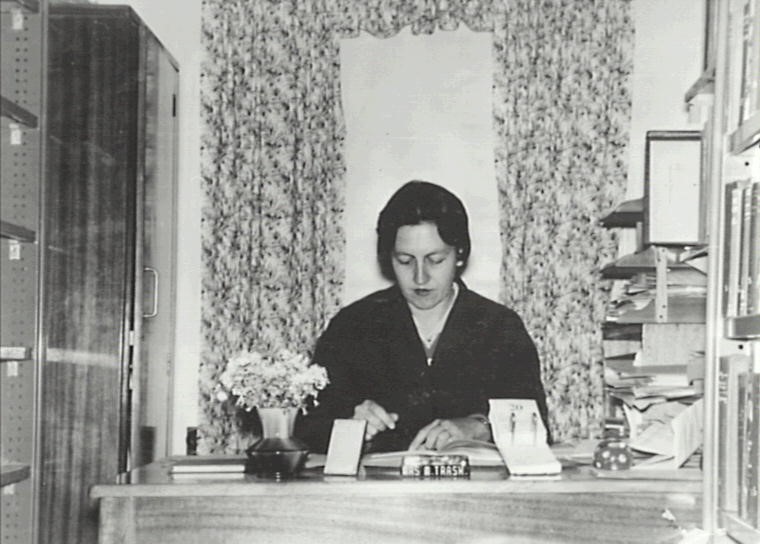
Chief Librarian 1948-1956; 1958-1963
Margaret Kinsella was born on 27 April 1928 at Camden, the youngest child of Henry and Mary Winifred (Price) Kinsella. Henry Kinsella was born in Baltinglass County Wicklow and had immigrated to NSW in the early 1900s. He enlisted in the AIF in 1915 and served at Gallipoli. He returned to Australia in 1916 and married Mary Winifred Price in 1917. The Kinsella family moved onto a soldier settlement farm near Wagga Wagga and later moved to Camden. They were living in Penrith by 1939. Margaret was educated Penrith Primary and Intermediate High School, completing her leaving certificate at Parramatta High School. She then went on to complete a BA in 1959 at the infant University of New England, and later completed a Master of Librarianship at the University of NSW.
Margaret was appointed Penrith Library’s first Chief Librarian in January 1948. She set out very quickly to establish Penrith Municipal Library under the auspices of the 1939 NSW Library Act. Working with the Council’s Library committee Margaret arranged for her training at the Public Library of NSW as well as all of the stock and shelving for the new Library in the School of Arts building in Castlereagh Street Penrith. The library opened on 22 April 1948 to much fanfare. Margaret also created a scrapbook of newspaper clippings and photographs to mark the library’s history. This tradition continues today. She established procedures for her growing number of staff and initially solely catalogued the books, processed them for the shelves and manned the service desk. Margaret produced many children’s activities in the library and campaigned for better facilities for the growing library. Members, book stock and the number of staff rapidly increased during the 1950s. Margaret Trask was at the fore looking for ways to improving the quality of Library services in Penrith.
Margaret married speech therapist William Eric Trask on 10 March 1951 at St Stephen the Martyr Anglican Church in Penrith. Local and family historian Ken Paskin wrote ‘Margaret had many friends and contributed to the history of the growth of Penrith from a town on the edge of the Metropolitan area to the City which stands apart in its own right’.
In October 1956, Margaret Trask resigned to take up a new position, librarian at the Australian Mutual Provident Society where she would implement a specialist library service. The Mayor commented at the time ‘She is not only very capable but very loyal to this council. She has managed the library in a most efficient manner and given great service to the public’. Margaret was succeeded by Joan Pearson. In September 1958, Joan informed the Council that she would be resigning in December. Upon hearing this, Margaret Trask applied for the position and was again appointed chief librarian. By the end of 1959, Margaret had completed her Bachelor of Arts.
In June 1960 Margaret Trask managed the move of over 6000 library books to their new premises in the old council chambers in Henry Street. She stated ‘I think people are beginning to realise we are here for their convenience, and are beginning to take advantage of all the facilities the library can offer them’. Following the biennial library association conference in Hobart in 1963, at which Margaret attended, she reported to council on the decision to establish local history sections within public libraries. The conference also recommended that chief librarians be appointed council archives officer. Penrith Council adopted this recommendation and appointed Margaret honorary archives officer. She also recommended the council purchase a photocopier for the library.
Although, Margaret worked tirelessly on the new library building project, it was the council’s decision to reduce the salary of the deputy librarian’s position that would see Margaret resign and leave in protest in December 1963. She stated their decision was ‘unrealistic and lacking of understanding of the place and purpose of the library in the community … This short-sighted policy makes it impossible for me to continue in my present position and maintain the standard of professional librarianship’. Margaret was appointed University Librarian at the University of NSW with the added responsibility of managing a new university library under construction. This would be the beginning of her stellar academic career in which she would become president of the Library Association of Australia and establish the innovative School of Library and Information Studies at Ku-ring-gai College of Advanced Education, one of the antecedent institutions of University of Technology Sydney.
At the memorial service in her honour in 2003 at the University of Technology Sydney she was remembered as ‘widely recognised as an outstanding leader in the profession of Library and Information Sciences. Her contributions in the development of the profession over the past 30-40 years have been seminal and have done much to raise its profile and to ensure its continuing relevance’. She is also well remembered and revered by Penrith Library staff who received their library training under her leadership.
Joan Pearson (1935-2019)
1953-1958; Chief Librarian 1956-1958
Joan was the third and last child born to Edward William and Ida Rachel (Chaseling) Pearson on 19 June 1935 at Paddington. Before Joan was born her father worked as a construction supervisor on the building of the Sydney Harbour Bridge. Later he worked in mechanics and was a teacher in farm mechanics at Yanco Agricultural High School. In 2002 Joan proudly represented her father in the official party to celebrate the Sydney Harbour Bridge’s 70th anniversary.
Joan attended a number of schools around NSW, receiving her leaving certificate at Parramatta. She was awarded a commonwealth scholarship which she forfeited owing to her father’s illness at that time. The family lived at Wentworthville. Joan was appointed a library assistant at Penrith Municipal Library in February 1953. She immediately commenced her studies at the Library School within the Public Library of NSW (now State Library of NSW) and after 12 months of practical experience, she received her library assistant certification. By March 1956 she was Deputy and Children’s Librarian. Joan was appointed Chief Librarian on 26 October 1956 upon Margaret Trask’s resignation. At the tenth anniversary celebrations in April 1958, Joan Pearson stated ‘We would like to bring to the people of Penrith the valuable possessions in this building. I am proud to be librarian of Penrith’.
Writing in the Nepean Times on 7 August 1958 Joan stated ‘Education is not an affair of childhood and youth, it is the business of whole life …books are as necessary for education as the electricity is for lighting of our homes …Libraries should offer children, young people, men and women, opportunity and encouragement to educate themselves continuously’.
In December 1958 Joan announced her intention to resign and to marry Erskine Park schoolteacher, Bill Burns. Bill lived next door to Joan’s boss, Margaret Trask who thought Joan and Bill would be a good match. They finally met and were soon afterwards engaged. Joan married Harold William (Bill) Burns on 3 January 1959 at the Wentworthville Methodist Church. After they married Bill was transferred to Dubbo.
Joan and Bill moved around the state to various locations finally settling in Lambton near Newcastle. Joan’s church work was very important to her and she was honoured in 2005 with a certificate of appreciation for 50 years of with the Uniting Church as a lay preacher. Joan and Bill had 4 children and at the time of Joan’s passing, had many grandchildren and great grandchildren. Joan passed away on 1 April 2019, a week after her family received the news that Penrith City Library had honoured her in the naming of one of its new study rooms – The Joan Pearson Room.
Heather Murray - December 1963 – January 1964
Thomas Dash - January 1964 – November 1968
Rex Whalan - December 1968 – January 1974
Robyn Allen - January 1974 – March 1977
Alan Flores - March 1977 – March 1986
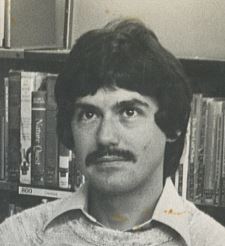
Graeme Pattingale - July 1986 – July 2001
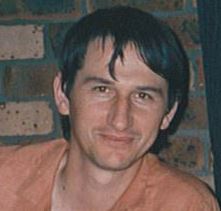
Colin Stevenson - August 2001 – July 2016

Sarah Dean - August 2016 – to date



